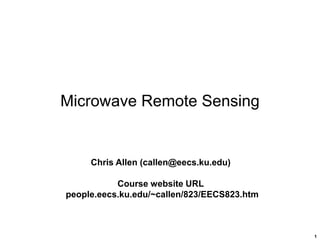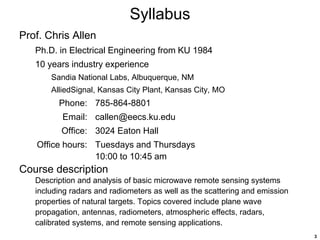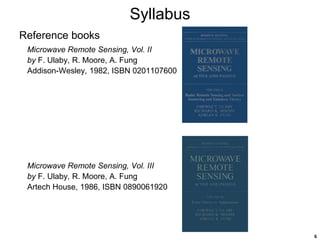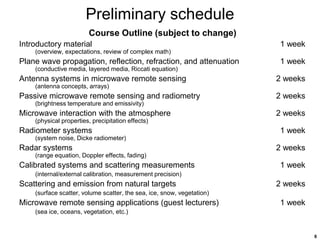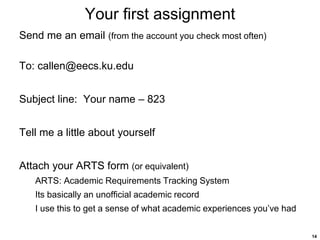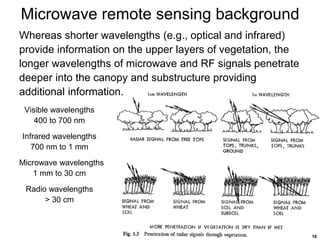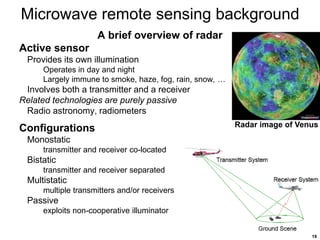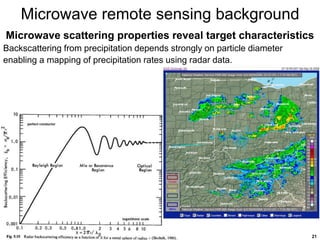This document provides an overview of a course on microwave remote sensing. It includes the syllabus, instructor information, course description, prerequisites, schedule, and assignments. The course will cover electromagnetic propagation, antennas, radiometry, atmospheric effects, radars, and applications. The first assignment is for students to email their academic record to the instructor. The document also provides background on microwave remote sensing, including how it differs from and complements optical remote sensing, and overviews of radar and radiometry principles.
